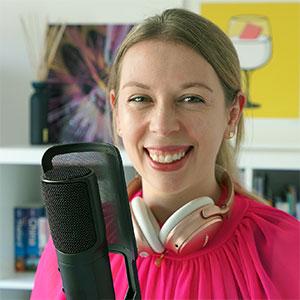22nd July 2019
Earlier this year, I stepped back into the primary school classroom to teach two groups of young learners (one group of mostly P3s and another group of P6s) as part of my studies and assessment on the Trinity College London Teaching Young Learners Extension Certificate (TYLEC) course. Even though I’ve taught young learners before and completed my DipTESOL years earlier, I was surprised by how much I leveled up my skills and knowledge in teaching as a result of this young learners teaching course.
The following outlines my top takeaways as a result of studying the TYLEC course:
1) Play-based learning isn’t what I thought it was
One of my biggest takeaways was understanding the different types of play-based learning there is and the effect it can have on the child’s development. Prior to the course, I had mostly used games, whereby I had given learners instructions and/or outcomes for a task. An example of this is the monster version of ‘Guess Who’ that my learners played in pairs. I had never tried out student-led play and feared that this would derail a lesson if I used it. I couldn’t visualize how free-flow play would support learners’ understanding and use of language, not to mention how I would justify it to parents as learning.
One of my most successful applications of free-flow play was when I took on the role of the giant from the fairytale of Jack and the Beanstalk which we studied earlier on in the lesson. Three things really surprised me during this free-flow play stage:
• How swiftly and easily my students responded to this form of improv’ theatre.
• how much the free flow helped me to assess their understanding of the story we had just read.
• how much they naturally used new language and mimicked actions from the story as we played. The funniest moment was when a student yelled ‘Give me an axe!’ and then mimed energetically chopping down an imaginary beanstalk.
2) Stories are a powerful learning tool
The online unit on the TYLEC course which suggested reading that centered on using stories provided me with a solid framework within which I could stage a lesson around a story effectively. Although I had used stories before in the past, these were mostly stories that were within the coursebooks I had been prescribed by the school. Consequently, I had never gone through the process of selecting a story book and building my own lesson plan as well as materials around it. I really enjoyed the creative process of selecting a story book that was appropriate for the level of my lower primary group and their interests, visually appealing, and appropriate in length for the time of a lesson. In the end, I chose the story of The Queen’s New Chef (Reed, 2010), which enabled me to develop my students’ ability to differentiate between words that start with /k/ /ʧ /ʃ/ (e.g. cake, chop, Charlotte) – this was something that we studied prior to reading the story.
Not only did using such a story and staging it according to what I learnt on the course, really help my students make good progress in their literacy skills, it also captivated their interest. Towards the end of the lesson I asked my students what they liked about the story. To this, Oscar replied ‘It’s a happy story. I like the pictures and the colours.’ I then followed this up with, ‘What’s the main idea of the story?’ After a long pause whereby I began to think that my question was too difficult and needed to be rephrased, Bella piped up and said ‘I think it’s about how we should eat healthy food and that eating unhealthy food will make us not feel good.’ This was one of my most memorable teaching moments on the TYLEC course where I was left amazed by how my 8-year old student was able to infer and summarize the main idea of a story in one sentence.
3) Making the most of classroom space is invaluable
As I progressed through the teaching practice component of the course, I began to make better use of the space in the classroom to support different types of tasks. Beforehand, I had shied away from moving furniture around too much in the classroom because I thought it would deduct too much time from the lesson and not make much of a difference. As a result, my classroom layout was mostly interchanged between having students stand in a circle for warm-up tasks and drills, to having them push tables together for pair or group work tasks.
Over the course, I began to deviate from my usual habits to try out different layouts by spending a few minutes to set up the classroom. I was surprised by how much this impacted my students’ level of motivation, how they interacted with each other, as well as the success of a task. An example of this is when I moved tables and chairs to resemble blocks and roads which students then named and labelled with flashcards of different places (e.g. bakery, 7/11, MTR Exit, Milk Tea Shop). As soon as my students entered the classroom, they asked about the layout and the topic ahead. What’s more, they were eager to label and take turns to use the newly taught vocabulary to label their city which they then later used to ask and give directions in. I was amazed by how much my students got into roles during the main task as I observed them moving around the classroom, stopping to ask one another for directions and gesture as they told others where the bubble milk tea shop was.
From that point onwards, I spent a lot more time and thought about how I could manipulate the space in my classroom to support a given task and interaction pattern.
Of course, there are many more takeaways that I could add to the list above. The three I’ve listed however are the most memorable because they affected my beliefs about teaching and learning, and consequently the approaches I use when teaching young learners.
The Online Trinity TYLEC course is suitable for EFL teachers around the world. Click here to learn more about entry requirents, dates and fees.



